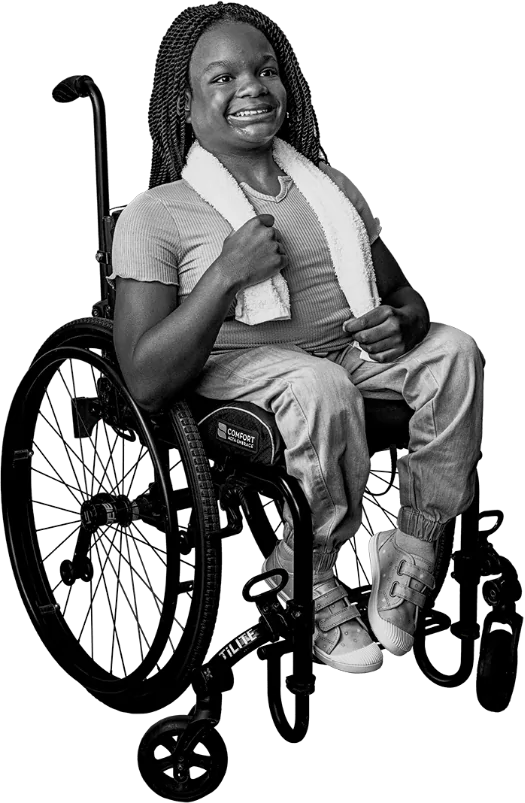Causes2
- Cerebral palsy (CP)
- Traumatic brain injury
- Epilepsy
- Congenital abnormality of brain development

Symptoms3
- Excessive wetness
- Skin breakdown around the mouth
- Infection from skin breakdown
- Dehydration or not enough fluids
- Foul odor
An estimated 445,000 children under the age of 18 suffer from chronic sialorrhea4,5
Two Principal Types4
Anterior Sialorrhea
forward spillage of saliva from the mouth
Posterior Sialorrhea
backward spillage of saliva from the mouth down airway

Impact on Daily Living6-11
Social
- Embarrassment
- Social isolation
- Stigmatization
Medical
- Perioral skin breakdown
- Aspiration pneumonia
- Choking
- Dehydration
Complications
Internal Effects
- Risk of breathing problems
- Swallowing or feeding difficulties
External Effects
- Greater risk of infection
- Skin irritation
Mia Is a 12-year-old Bookworm Who Fills Life with Imagination
The life she's fighting for
Mia has always found herself exploring different worlds with every book she reads. Not only does she love to learn, but she loves sharing these stories with others. Connecting with close friends about their passion for reading and sharing stories they’ve written keeps Mia happy and energized. She gravitates towards heroic characters in books and mirrors their strength, as a force to be reckoned with.

The weigh-in
- Mia developed chronic sialorrhea due to cerebral palsy
- Sometimes the drooling can feel embarrassing and interfere with daily things like enjoying a meal or discussing her favorite books with friends
Sparring with chronic sialorrhea
- For a while, Mia adjusted her life to live with the symptoms of chronic sialorrhea, receiving no treatment

Never defeated, Mia and her parents fought back
The Pediatric Portfolio
Watch a pediatric physiatrist discuss the safety and efficacy of XEOMIN for approved pediatric indications
Explore XEOMIN for the treatment of pediatric chronic sialorrhea
Consider XEOMIN






